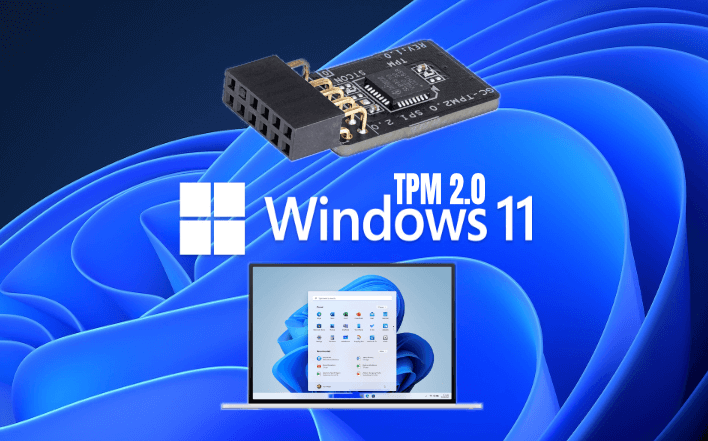Probably everyone already knows that Windows 11 has been released. Even more recently, you need TPM to be able to install it. Ideally, TPM 2.0, not to resort to various methods to avoid the requirement.
But what is TPM? Abbreviated from the Trusted Platform Module, TPM is an international standard for a secure crypto currency. That is, a dedicated microcontroller, in order to secure by using integrated cryptographic keys. The term TPM also refers to a chip that conforms to TPM standards.
Modern processors such as Intel and AMD offer this functionality through their processors, in the form of TPM based on firmware (abbreviated fTPM).
Like most technologies, TPM has evolved over the years. Windows 11 requires TPM 2.0, according to official system requirements. Although, technically speaking, it also works on systems with TPM 1.2. But the official recommendation is TPM 2.0.
What exactly does TPM do?
In short, and a little vaguely, a TPM chip helps improve system security.
For example, some Chrome books include TPM, and during the boot process, the chip scans the BIOS for unauthorized changes.
Another easy-to-understand example is fingerprint reader laptops. Many of these models use TPM to store recorded fingerprints more securely than a simple file on your hard drive or operating system.
A TPM chip uses a mix of software and hardware to protect various important data or parts of the operating system and if it senses a problem (such as a virus or malware compromise), it can start in a ‘quarantine’ mode to help fix the problem and prevent further damage.
In Windows TPM it will be used, as David Weston explained, to protect encryption keys, authentication data and such sensitive data. So that a potential malware cannot access this data.
What is not TPM?
The magic solution God on earth.
Yes, it is still a good protective layer and even necessary nowadays for how many remote attacks take place and a very useful and smart technology.
But it is useful when we look at it as a layer of our entire protection. Activation or presence of TPM and even TPM 2.0 does not make an antivirus / antimalware / antiransomware program or a firewall useless. But it is complementary to the other protection starts of a system.
Why did Microsoft decide to be so aggressive with the TPM requirement?
First of all, TPM is nothing new. It has been used in business and enterprise environments for some time.
Given that we already have over a billion Windows 10 devices and many devices with older versions of Windows globally, but also the increasing number and complexity of attacks that take place even on normal users, Microsoft more than likely wants to take extra safety precautions.
Although sometimes it is brutal to introduce such strict requirements and which can bring even small inconveniences, from my point of view the additional security, even a little forced, is welcome. There are many users who are not careful or do not use their intuition too much when browsing online. No, you didn’t win that random iPhone without doing anything, and the Iranian prince doesn’t leave you a $ 20 billion inheritance.
What are the drawbacks?
I’m mainly referring to the small issues with how TPM can be used for anti-cheat in games but also the conflict with other existing systems.
But also with VBS (Virtualization-Based Security), which is a setting that uses hardware and software virtualization to improve system security. It’s just that, as those who have worked with virtual machines already suspect, it also comes with an impact on gaming performance – it varies depending on the game (PerfectTechNews has an article about it here if you’re interested) .
How do you check if your system supports TPM or TPM 2.0?
Microsoft has lists here for Intel and here for AMD with officially supported processors, so they have a fairly new TPM for Windows 11.
Basically, you may have problems with systems older than 4 years. But from what I understand they are to be supported and there are methods to install Windows 11 on them. So it’s not as bad as the TPM situation sounds.
On some systems, TPM may not be enabled even though it is supported. Check in the BIOS and enable it if you need TPM. Usually the setting has TPM in the name or refers to it. If you can’t find it, consult the motherboard manual, more than likely you will find from which BIOS menu you can activate TPM.
Conclusions
The conclusion is that Microsoft, by introducing this requirement, wants to improve the security that the Windows operating system brings to consumers and businesses. That’s why they partnered with Intel, AMD and Qualcomm.












Add Comment